The wildflowers have peaked and are on the downslope toward seeding out in preparation for next season. The bluebonnets in particular are thick with seed pods…and caterpillars.
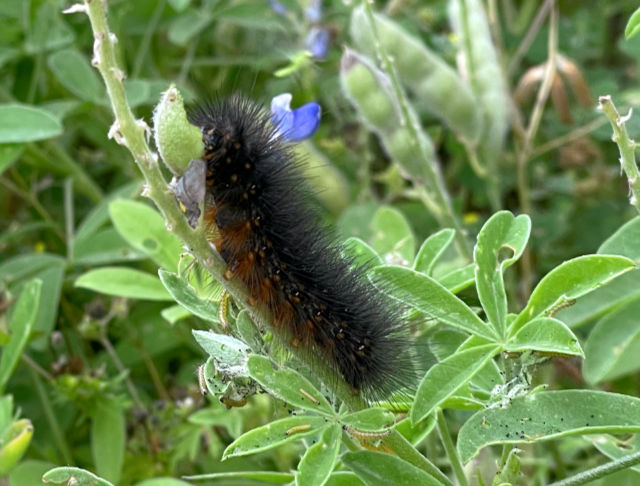
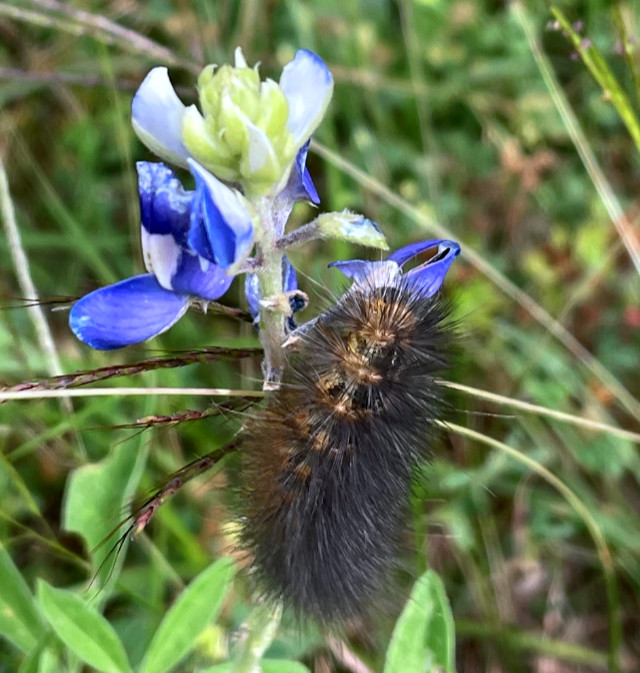
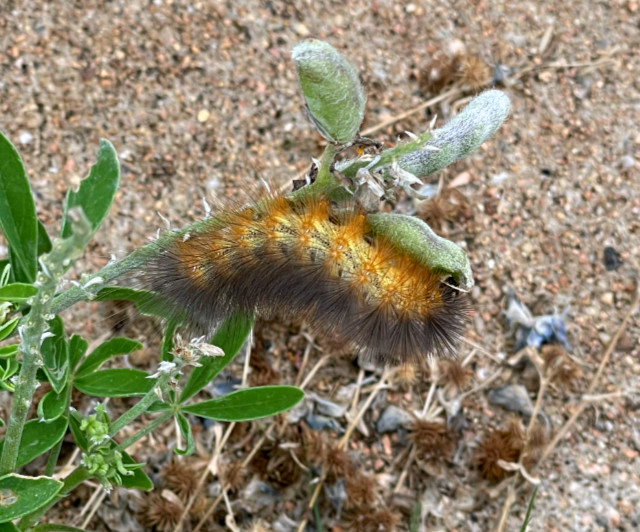
These are all salt marsh caterpillars, and they will eventually metamorph into, well, salt marsh moths (Estigmene acrea). The moths are actually quite pretty, as moths go, and they’re great pollinators as they flit from flower-to-flower feeding on nectar. But the caterpillars are not so beneficial.
The first of the three photos above clearly shows how this caterpillar has stripped the leaves from the bluebonnet it’s inhabiting. These larvae can be serious pests when found in great numbers in fields of crops such as corn and cotton. Fortunately for us in the Hill Country, they’re not so numerous as to represent even the slightest threat to our wildflower populations.
But one behavior never fails to generate this important question: why did the caterpillar cross the road? Every street in our little town is literally crawling with caterpillars making their way from one side of the street to the other. I guess they believe the “grass” really is greener on the other side, fence or no fence. Some theorize that they’re just looking for a place to pupate (or form chrysalises).
By the way, even though these caterpillars might evoke some fear — there are, after all, some species that sport spines or hair that wield powerfully painful stings — the salt marsh caterpillar is not dangerous, although some individuals might be more sensitive to irritation through the skin than most. I personally have never felt a great desire to handle a caterpillar of any persuasion unless I’m wearing gloves.

The salt marsh caterpillars command attention by virtue of their omnipresence, but we found a caterpillar of a different species on our back deck that is downright fascinating. Get a load of this guy that Debbie pointed out to me yesterday afternoon (we both mistook it for a stick that fell off our pecan tree).
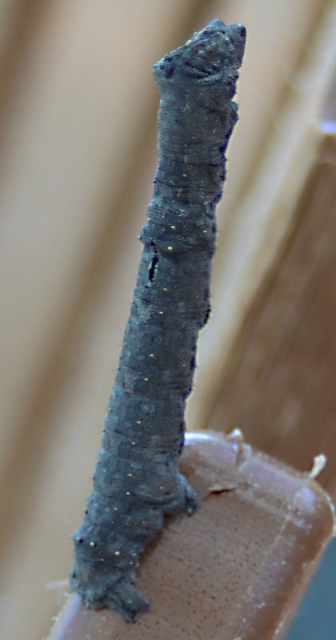


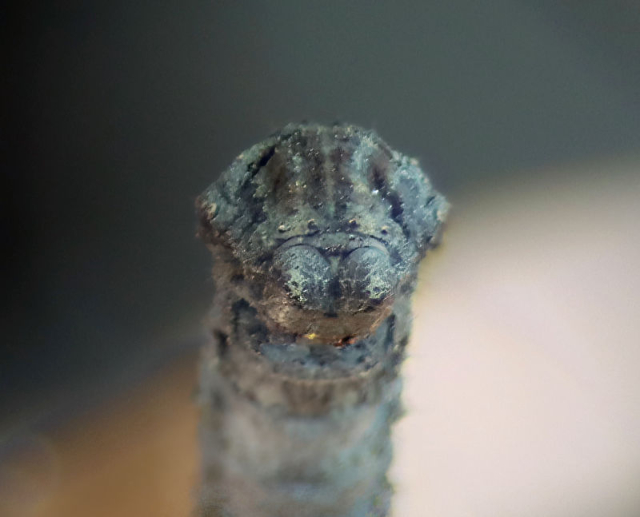
We didn’t know whether this was a creature or a…thing. It wasn’t rigid; it swayed slightly when I blew on it (yes, I’m quite the scientific observer), and it appeared to be holding on to a deck chair with teensy feet.
I had no idea how to begin to search for an identity, so I turned to my go-to resource for insect identification, the Antman’s Hill Facebook group. The admins are entomologists and experts in the field of hexapod invertebrates and they’re really, REALLY hard to stump. I uploaded the preceding photos, and within thirty minutes, was greeted with this definitive I.D.: it’s a Geometrid moth caterpillar, and yes, it’s alive.
The family Geometridae contains about 23,000 described species, so knowing the exact species of this caterpillar might be difficult…except it’s probably not. It’s one of the few so-called “stick mimic” caterpillars, the reason for the name being quite obvious, and it’s pretty likely that it’s an American peppered moth.
I’ve never heard of this species of moth, but a quick scan of the literature reveals that it’s such a fascinating study that I can’t begin to scratch the surface here. Whether it’s the postural camouflage of the caterpillar, or the polymorphism of the adults that appears to have evolved over a relatively short period of time in response to human-initiated changes in environment (think “rural to urban” development), these moths are reminders — as if we needed more — of the amazing diversity of life on earth, a source of constant wonder if one just takes the time to look.
But, back to “our” stick mimic. It stayed in the same approximate position for several hours, until dusk, when I noticed it had loosened up a bit.
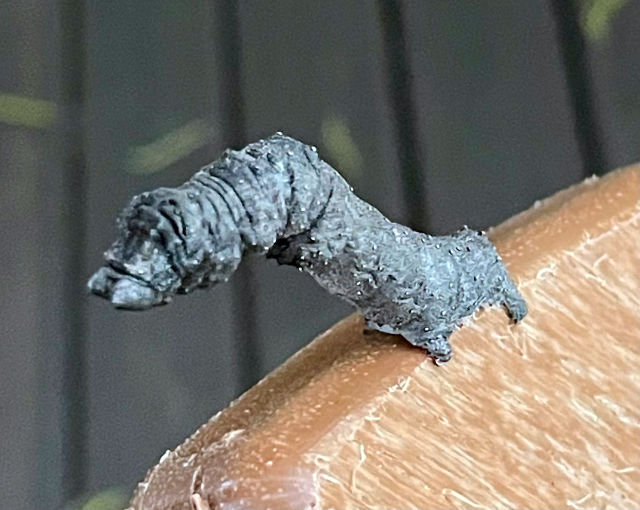
It had also moved a very slight distance from its original position, but it never appeared to react to my presence.
It was a bit disappointing when we looked for it this morning and found no trace of it. I hope it made its way to someplace safe, but we at least have pictorial evidence of its fleeting presence.
Discover more from The Fire Ant Gazette
Subscribe to get the latest posts sent to your email.

